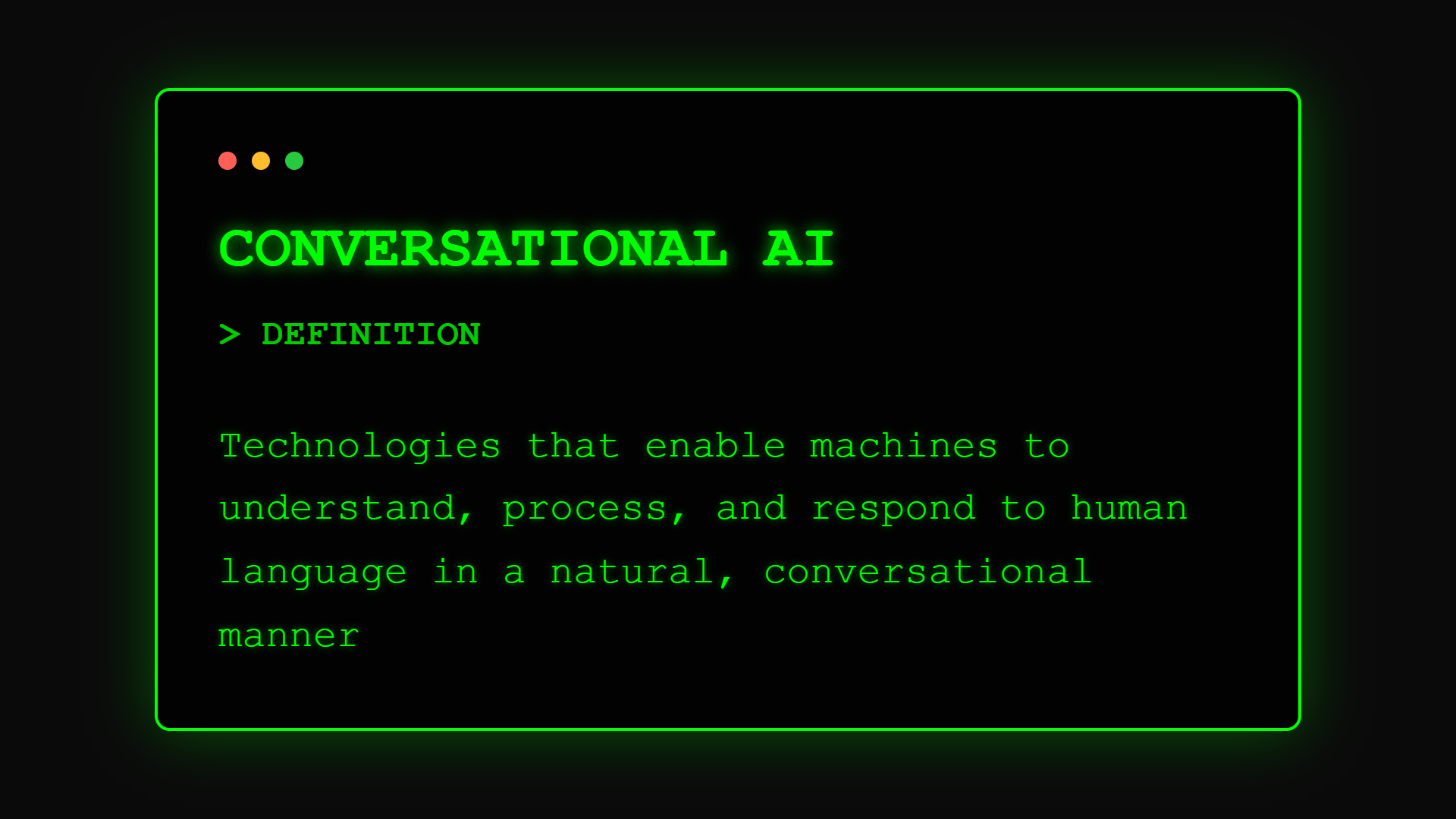AI Terms
What is Conversational AI? When Machines Truly Understand

Remember the frustration of chatbots that only understood exact keywords? Modern conversational AI changes everything. It understands what you mean, not just what you say, enabling natural dialogue that feels genuinely helpful rather than robotic.
From Scripts to Understanding
Conversational AI represents the evolution from rigid chatbots to systems that truly comprehend human communication. While chatbots date to the 1960s, modern conversational AI emerged with advances in natural language processing around 2016.
Gartner defines conversational AI as "technologies that enable machines to interact with humans using natural language, understanding intent and context to provide relevant, personalized responses across voice and text channels."
The transformation accelerated with large language models, moving from pattern matching to genuine comprehension of nuance, context, and even emotion in human communication.
What Conversational AI Means for Business
For business leaders, conversational AI means automated interactions that feel human-systems that understand customer intent, maintain context across conversations, and resolve complex issues without frustrating users.
Think of it as the difference between an automated phone tree that makes you scream "representative!" and having a knowledgeable assistant available 24/7 who remembers your history and understands your needs.
In practical terms, this enables customer service that actually helps, employee support that truly assists, and sales interactions that feel personalized rather than scripted.
Building Blocks of Conversation
Conversational AI consists of these essential elements:
• Natural Language Understanding (NLU): Comprehends not just words but meaning, intent, and context, recognizing that "I'm freezing" might mean adjust thermostat or complaints about service
• Dialogue Management: Maintains conversation flow and context, remembering previous exchanges and managing multi-turn interactions naturally
• Natural Language Generation (NLG): Creates human-like responses that match the conversation's tone, context, and user's emotional state
• Context Awareness: Tracks conversation history, user preferences, and situational factors to provide relevant, personalized interactions
• Integration Layer: Connects to business systems, databases, and APIs to access information and execute actions beyond just conversation
How Conversations Flow
Conversational AI processes dialogue through these steps:
Input Processing: User speaks or types naturally. System processes audio to text if needed, then analyzes the complete utterance for meaning
Intent Recognition: AI determines what user wants to achieve, distinguishing between "I want to cancel" (action) and "How do I cancel?" (information)
Response Generation: System formulates appropriate response considering context, user history, and business rules, then delivers it conversationally
This happens in milliseconds, creating fluid dialogue that adapts to user needs.
Conversational AI Applications
Different implementations serve various needs:
Type 1: Customer Service AI Best for: Support and problem resolution Key feature: Handles complex, multi-step issues Example: Technical support that troubleshoots problems
Type 2: Virtual Assistants Best for: Task completion and information access Key feature: Executes actions across systems Example: Employee assistants for HR queries
Type 3: Sales AI Best for: Lead qualification and nurturing Key feature: Personalized engagement at scale Example: AI that books demos and answers product questions
Type 4: Voice AI Best for: Hands-free interactions Key feature: Natural speech recognition and generation Example: Voice-activated business intelligence queries
Conversational AI in Action
Here's how businesses benefit from conversational AI:
Banking Example: Bank of America's Erica handles 19.5 million conversations monthly, from balance inquiries to complex financial planning, with 90% resolution rate and higher satisfaction than human agents.
Retail Example: Sephora's conversational AI provides personalized beauty consultations, increasing average order value by 35% through natural dialogue about preferences and skin concerns.
HR Example: Unilever's AI recruiter conducts initial interviews with candidates, asking follow-up questions based on responses, screening 1.5 million applicants with 91% candidate satisfaction.
Implementing Conversational AI
Ready to enable natural dialogue?
- Master the foundation with Natural Language Processing
- Understand Large Language Models powering modern systems
- Ensure quality with Prompt Engineering
- Deploy effectively using our Conversational AI Guide
FAQ Section
Frequently Asked Questions about Conversational AI
Part of the [AI Terms Collection]. Last updated: 2025-01-10